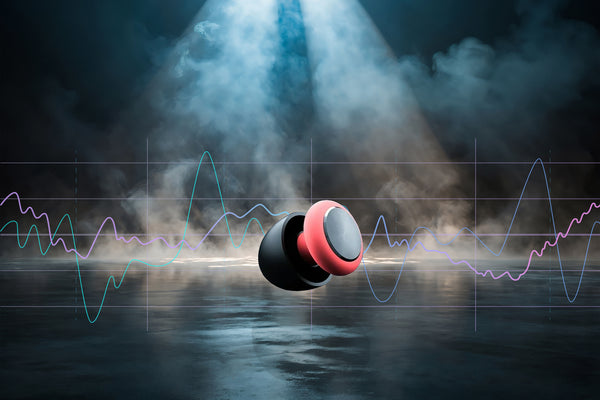Why OSHA Says 85 dB Is Dangerous - And What That Means for Everyday Workers
When most people think of workplace hazards, they picture heavy machinery, sharp tools, or unsafe conditions. But one of the most common - and most overlooked - risks is noise.
According to the Occupational Safety and Health Administration (OSHA), exposure to noise levels of 85 decibels (dB) or higher over an extended period can cause permanent hearing loss. For millions of workers across industries, this isn’t a rare occurrence - it’s daily life.
What Does 85 dB Sound Like?
To put it in perspective:
- Normal conversation: 60 dB
- Busy city traffic: 80–85 dB
- Power tools or lawnmower: 90 dB
- Rock concert or nightclub: 100–110 dB
That means everyday workplace environments like warehouses, construction sites, event setups, and even restaurants can easily hit or exceed the danger zone.
Why OSHA Sets the Standard at 85 dB
OSHA’s 85 dB threshold isn’t random. It’s based on decades of research showing that prolonged exposure at or above this level damages the delicate hair cells in the inner ear - the cells responsible for translating sound into electrical signals for the brain.
Once these cells are damaged, they don’t grow back. The result: permanent hearing loss or tinnitus.
OSHA requires employers to provide hearing conservation programs if workers are exposed to an average of 85 dB over 8 hours. This includes monitoring, training, and providing hearing protection.
Workers Most at Risk
- Construction crews: drills, saws, and heavy machinery.
- Event staff and security: live music, loud crowds, PA systems.
- Warehouse and factory workers: forklifts, conveyors, stamping presses.
- Hospitality staff: bars, nightclubs, and restaurants with amplified music.
- Transportation workers: airports, bus depots, and loading docks.
Even short bursts of extremely loud noise can cause immediate damage - but it’s the cumulative effect of daily exposure that silently steals hearing over time.
Why Foam Earplugs Aren’t Enough for Workers
Foam plugs are cheap, but they often:
- Muffle communication, making it harder to hear instructions.
- Create discomfort during long shifts.
- Don’t stay in place reliably, especially in active environments.
This leads many workers to “cheat” - pulling them out halfway or not wearing them at all.
Spares Earplugs: Practical Protection for the Job
Spares Earplugs were designed with real-world workers in mind:
- 30 dB reduction in harmful frequencies while maintaining clarity.
- Non-insertion fit - no pressure inside the canal, so they can be worn comfortably for long shifts.
- Clear communication - hear voices, alarms, and important signals without muffling.
- Reusable and durable - made to handle daily use on the job.
Instead of being an annoyance, Spares make hearing protection practical - which means workers are far more likely to use them consistently.
Protecting Workers, Protecting Futures
Hearing damage isn’t just an inconvenience - it impacts careers, quality of life, and long-term health. Employers who provide high-quality hearing protection aren’t just meeting OSHA standards - they’re protecting their people.
Stay compliant, stay safe, and stay clear. Order Spares Earplugs for yourself or your crew at www.grabyourspares.com.
#WorkplaceSafety #OSHA #HearingProtection #ProtectYourHearing #SparesEarplugs #Construction #EventStaff

